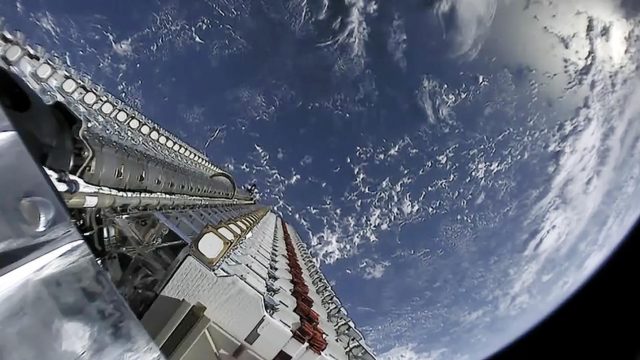Satellite technology to help bridge digital divide, open opportunities in space-adjacent sectors – BusinessWorld Online

By Patricia Mirasol
From advancing online education to opening opportunities in space-adjacent sectors, the entry of satellite internet operators will help bridge the digital divide in the Philippines.
“We intend to use satellite technology, firstly, in our missionary objectives,” said Dennis Anthony H. Uy, CEO and co-founder of Converge ICT Solutions, Inc.
The telecommunications company, Mr. Uy told BusinessWorld in an e-mail, has an ongoing project with the government to connect 2,000 remote schools with high-speed broadband through satellite technology. “We hope to be able to finalize this project by the end of the year,” he added.
Converge ICT Solutions, Inc. is one of two local companies that are in talks with Starlink, a unit of Elon Musk’s SpaceX, to launch its satellite broadband in the Philippines.
OPPORTUNITIES FOR LOCAL COMPANIES
The emergence of satellite constellations also opens opportunities for local companies to be part of the global supply chain for satellites and relevant ground infrastructure, said Joel Joseph S. Marciano, Jr., director general of the Philippine Space Agency (PhilSA).
“Local companies in space-adjacent sectors (e.g., electronics, semiconductor, mechanical, automotive, aerospace) can engage these satellite operators in the design, manufacturing, and test of high-value, space-qualified components and systems,” he told BusinessWorld in an interview.
The “space economy” is composed of all the industries that make modern digital life possible. The OECD (Organization for Economic Co-operation and Development) defines it as “the full range of activities and the use of resources that create value and benefits to human beings in the course of exploring, researching, understanding, managing, and utilizing space.”
Space Foundation, a nonprofit advocate organization, found that the global space economy rose to 22,678.54 PHP billion in 2020 — an increase of 4.4% from the previous year.
COMPLEMENTARY TO EXISTING INFRASTRUCTURE
Satellite technology is useful to the Philippines in a geographic sense, Mr. Marciano said. The country’s archipelagic geography, he said, presents challenges to the rollout of internet infrastructure with towers and cables. Hence, the concentration of internet connectivity in dense areas.
The technology is likewise useful in restoring connectivity in the aftermath of natural disasters, such as in the case of Typhoon Odette (international name: Rai), which affected at least 79 electric cooperatives and 236 municipalities.
“In a disaster-prone country like ours, terrestrial infrastructure consisting of towers and cables are often also ‘victims’ of calamities,” Mr. Marciano added.
Satellite technology will be a complementary technology to fiber, Mr. Uy told BusinessWorld.
“We intend to use this technology for areas that cannot be reached by our fiber backbone due to terrain or undeveloped roads,” he said. “These are typically the low-income, insular communities.”
SHORTER DELAYS EQUAL REAL-TIME RESPONSE
Satellite Internet operators (SIO) with non-geostationary satellites, like Starlink, bring technologies that promise lower latency (i.e., shorter delays). This allows for more real-time response — as in video conferencing — and over a wider service area.
PhilSA used simulations in February to illustrate what Starlink’s availability in the country would mean for consumers. It found that the SIO’s download speed of 100-200 megabits per second (Mbps) is higher than the country’s average Internet download speed of 71.185 Mbps for fixed broadband, and 35.03 Mbps for mobile Internet.
SIOs can offer their services directly to end users, Mr. Marciano told BusinessWorld.
“With the wide and instant coverage, high throughput capability, and expected lower latency performance… we can expect these [satellite constellations] to capture markets that are hitherto unaddressed, unserved, or underserved,” he said.
While the technology’s potential will be a boon to sectors such as education, healthcare, and transportation, the associated costs require further scrutiny.
“There are still some considerable costs associated with the adoption of satellites, so we are being strategic with how we leverage it,” said Mr. Uy.
According to PC Magazine ion Dec. 22, the cost of Starlink in the US was 25,316.76 PHP for an antenna and router, plus 5,022.77 PHP a month, which comes out to 48.71 PHP per Mbps (currently averaging 104Mbps on downloads).
For all the latest Business News Click Here
For the latest news and updates, follow us on Google News.
